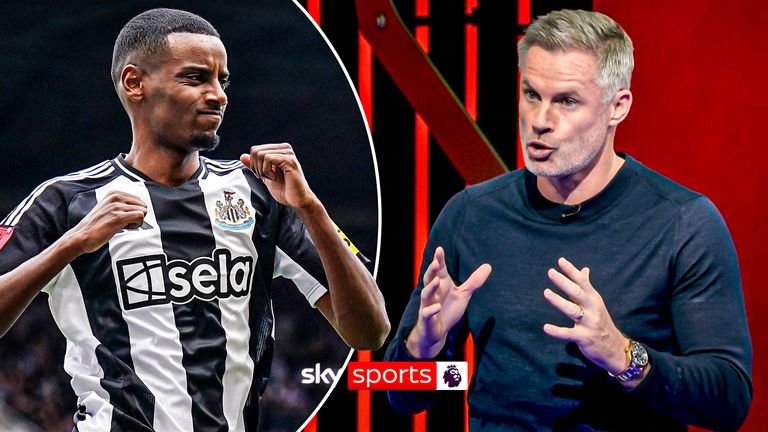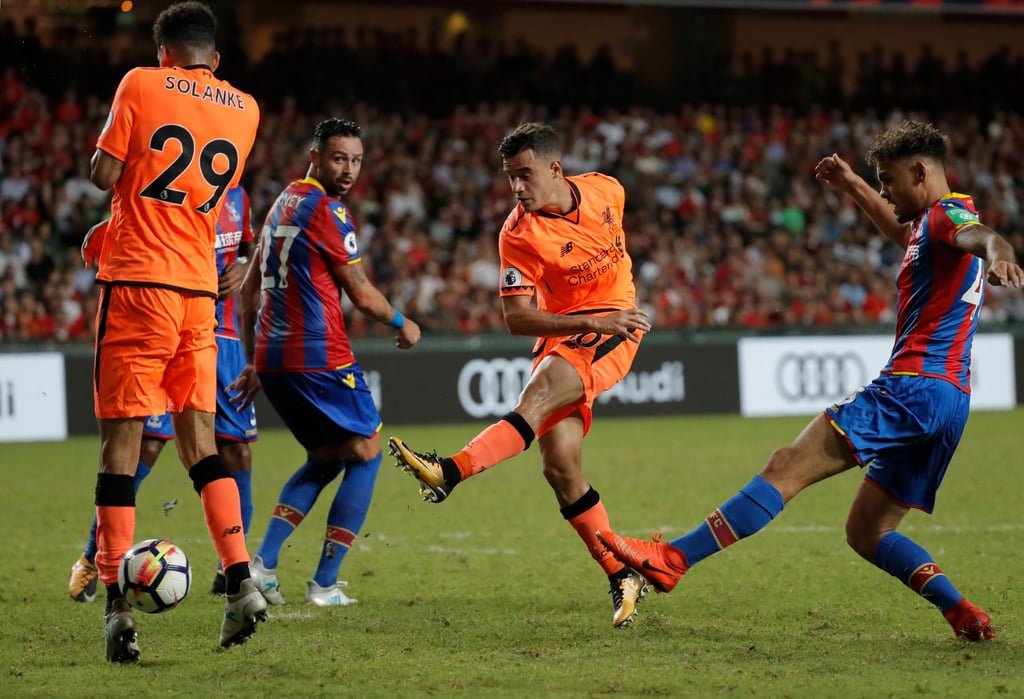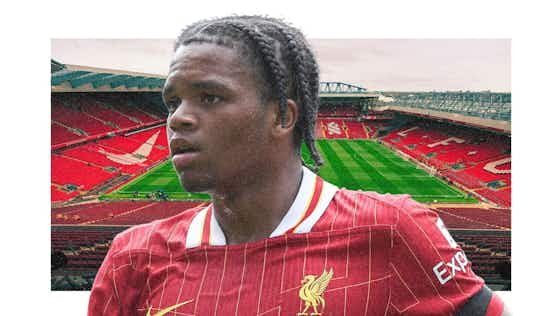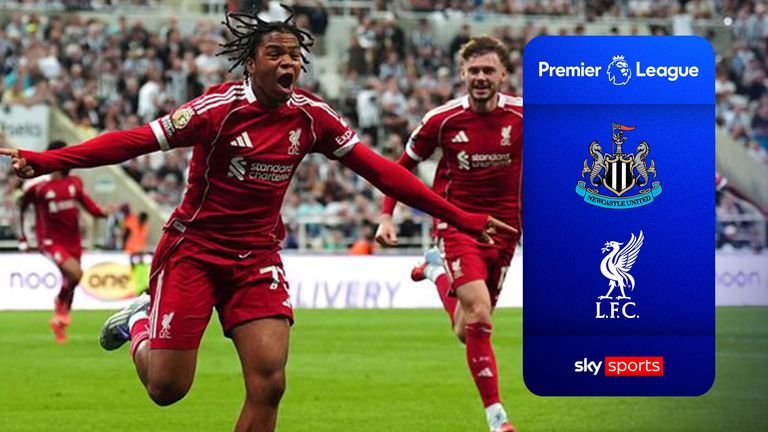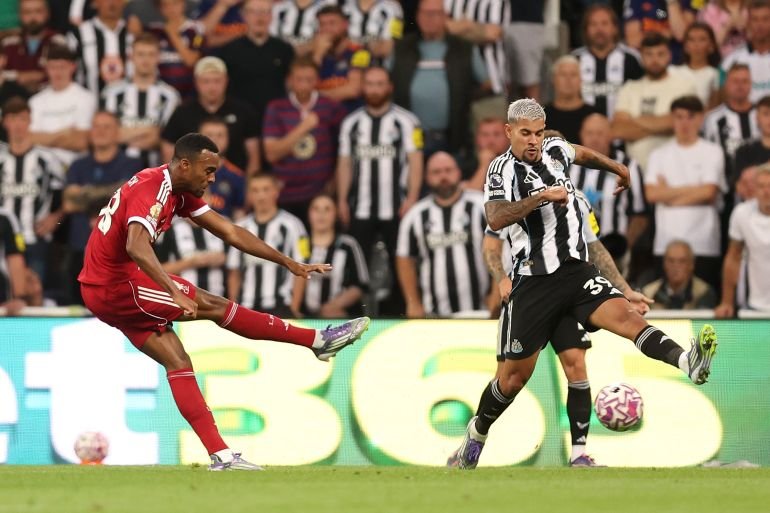There is no doubting the sizeable and growing divide between London and much of the rest of England.
A recent report found London wages were 33 per cent higher than the national average and as high as 68 per cent more than in Burnley, a town in the north-west of the country.
Higher living standards, higher productivity levels and more business start-ups were also cited in the report as examples of the divide.
But what about football? Do London clubs hold an advantage when it comes to signing prospective players?
Well, there has certainly been a geographical shift in where the Premier League’s clubs are based.
Last season, there was a record-low number of northern clubs — just five — since the league’s rebranding in 1992. Conversely, there were seven London clubs and a further three from the south (Southampton, Bournemouth, and Brighton), meaning half the division came from London or further south.
This season, the balance has been restored slightly, with three northern clubs promoted from the Championship, but the growing trend has certainly driven south in the past three decades. There were 10 northern clubs in the inaugural Premier League in 1992-93, with seven from London or the south.
All 12 clubs from the first Football League in 1888 were exclusively from the Midlands and further north. West Bromwich Albion and Aston Villa were the two most southerly teams in a landscape that reflected where many of the country’s industrial powerhouses still were.
That remained the case for the next 16 years until Woolwich Arsenal became the top flight’s first London away day in 1904. The only other southerly club in the top two divisions (comprising 36 teams) at that time were Bristol City, in the Second Division, but Chelsea (1907) and Tottenham Hotspur (1909) soon followed Arsenal into the top flight.
The power shift has gradually evened out, but why are there more London clubs in the Premier League now compared with 30 years ago, with West Ham, Fulham and Crystal Palace now firmly established as top-flight regulars, plus Brentford and south-coast club Brighton having joined the party in recent years?

Brentford are among the London clubs in the Premier League (Michael Regan/Getty Images)
Sources familiar with transfer dealings in the league cite that foreign players are more likely to want to move to the capital, and the majority of signings that come into the league now are from overseas.
One former sporting director who worked at a non-London-based Premier League club told The Athletic the word ‘London’ comes up a lot when talking to agents of prospective signings.
“Particularly when dealing with players overseas,” he says. “You’ll hear ‘his preference is a London club’ pretty often.
“Imagine if you’re trying to sign a 20-year-old from South America, or Asia, to some of them, London basically is England. I think it’s particularly relevant to younger lads who aren’t married with kids, which I guess is probably true of most walks of life, in that they’re attracted by the bright lights.
“The ones with families moving with them are perhaps more inclined towards somewhere a bit quieter in a calmer neighbourhood, with more green spaces, maybe.
“But the younger ones attracted by the nightlife and the massive choice of things to do, then yeah, you have to maybe get a bit more creative in what you can entice them to your club with and finances come into that.
“It’s not the be-all and end-all. If they really want to get to London for a night out, they’ll just have someone drive them down there; it’s not like they’re getting a four-hour train, is it?
“You have to look at it the other way and say if you were moving abroad to France, you might want to be near Paris, or if you were moving to Portugal, you might want to go to Lisbon — it depends on what you want from the non-football part of what you do with your days.
“For the majority of players, the football club and the wages on offer come first, but there are definitely a lot who are swayed by the geography.”
Since the advent of the Premier League, the number of foreign imports in the division has increased dramatically.
In 1992-93, according to football data website Transfermarkt, of the 118 permanent signings made by the league’s 22 clubs, just 13 were from outside the UK and Ireland.
Those 13 signings included three that moved from one English club to another (including some chap called Eric Cantona going from Leeds United to Manchester United).
Liverpool signed Norwegian defender Stig Inge Bjornebye, Coventry signed American Roy Wegerle from Blackburn, and, in a summer that pre-dated Sean Dyche and Burnley by many years, all of Spurs’ six signings were English. Brexit Britain before it even became a thing.

U.S. international Roy Wegerle joined Coventry in 1993 (Mike Powell /Allsport)
Contrast that with the 2025 summer window so far. Of the 119 permanent deals listed on Transfermarkt at the time of writing, 31 hold either UK or Irish nationality.
Eberechi Eze, Jordan Henderson, Noni Madueke, Liam Delap and James Trafford are among those.
That equates to roughly 74 per cent of this summer’s permanent Premier League signings being foreign players, compared with 11 per cent in the 1992-93 season.
So if foreign players are more inclined to join London clubs, has that helped lead to an improvement in the fortunes of those clubs?
Well, you would imagine it has strengthened their hands.
Arsenal’s average league position in the Premier League era is fourth (specifically, 3.88 over 33 seasons). Their average league position in the 33 seasons preceding the Premier League was 7.3.
Chelsea’s average finishing position in the Premier League is 4.85, compared with 15.8 in the three-and-a-bit decades before, while Spurs have jumped slightly to 7.7 in the Premier League compared with 8.2 before the league launched in 1992.
West Ham average out as 13th in the Premier League era and 15.5 from the 1959-60 season to 1991-92. Brentford, Fulham and Crystal Palace have also enjoyed vastly improved fortunes in the Premier League era, as have Brighton, a club based just an hour from London Bridge on the train.
Going the other way have been Queens Park Rangers, who finished fifth in the first Premier League and are now stuck in the Championship doldrums, and Wimbledon, who suffered unique circumstances in dropping down the leagues before being reborn as AFC Wimbledon, but they are the exceptions.
Skewed finances in London compared with the rest of the country, with house prices, rents and wages all higher than elsewhere, are evident in football, too.
The four most expensive season tickets are all on sale at London clubs (Fulham, Spurs, Arsenal and West Ham) and, before the introduction of a cap on away match tickets, London clubs invariably charged the most expensive prices.
Those prices clearly boost revenue and London has four clubs in the top 17 in Europe for the highest revenues: Arsenal, Chelsea, Spurs and West Ham.
Those clubs are using the word London in their branding more than ever before; Chelsea introduced their CFC LDN branding last season, Arsenal pride themselves on being ‘North London Forever’ at every home game, while West Ham updated their club crest in 2016 to include the word London when they moved to the London Stadium.
This isn’t a one-way street. The champions of England hail from Liverpool and most title-winners still don’t come from London; Arsenal’s most recent success was in 2004 and Chelsea are the only London-based winners since then (with five titles). Liverpool and the Manchester clubs will never fail to attract the best players in the world, with their finances, histories and fanbases, not to mention their great locations for footballers to live.
But the shift south is clear. And it is a trend that is growing.

Chelsea are embracing their home city in their branding (Julian Finney/Getty Images)
An agent who regularly works on Premier League transfers told The Athletic: “It often comes up either as a starting point or at the end point of negotiations.
“Often you’ll find it’s because they’ve got friends or international team-mates living there, and sometimes there are strong communities of a certain nationality, but that’s also true of other cities; it’s not a closed shop.
“And then often it’ll come up again when it’s decision time, i.e. if you’ve got two similar-sized clubs but one is in London and one isn’t, it can definitely be a sway factor.”
On the flip side, the Premier League’s northernmost club is Newcastle, 280 miles from London. The club has undoubtedly suffered in the transfer market compared with clubs from the capital, not least this summer, when Joao Pedro chose Chelsea instead of the north east.
“He has always said to me that he really wants to live in London,” ex-Brighton team-mate Igor Julio was quoted as saying this summer.
“So I think he will prioritise first what comes from London.”
Managers and staff have previously bemoaned players’ preference of London over Newcastle.
“If we went for another British player, there wouldn’t be a problem,” Bobby Robson said in 2001.
“Not many of them would turn down Newcastle, but foreign players are tempted to go to London.”
Another former Newcastle manager, Kevin Keegan, was famously said to have told prospective signing Rob Lee that it was quicker to get to Newcastle from London than Middlesbrough.
Signing Faustino Asprilla from Italian side Parma also involved scurrilous tactics in the 1990s.

Faustino Asprilla joined Newcastle from Parma (Mark Thompson/Allsport/Hulton Archive/Getty Images)
Newcastle’s then chairman Freddy Shepherd said some years later: “We went over to Parma and Kevin Keegan got there before us, he was sitting there persuading him to come. When we got there, myself, (and fellow directors) Freddie Fletcher and Douglas Hall were there, and the deal was done.
“We shook hands. Then Asprilla’s agent said, ‘He just wants to know which part of London Newcastle is in?’.
“We said, ‘What?’. We said, ‘Just tell him it isn’t far!’. Tino couldn’t speak good English at the time, but every transfer had a story behind it. There was always something.”
Current manager Eddie Howe insisted in May it wasn’t an issue for Newcastle now, saying: “I’ve not sensed that problem here. I think the biggest issue with the players is that they want to come to a club that they sense is moving forward and has a chance to win trophies.
“And financial terms is an issue, too. Our PSR position is an issue in that. So there are those challenges. But it’s a brilliant place to live and I’ve never had any issue with that.”
The way Newcastle’s torrid summer has panned out would suggest otherwise.
Advantage London? The evidence suggests so — and it’s difficult to envisage this not lasting. As Neil Warnock would say, “We’re in London, that’s the f*****g difference.”
(Top photo: Ryan Pierse/Getty Images)

